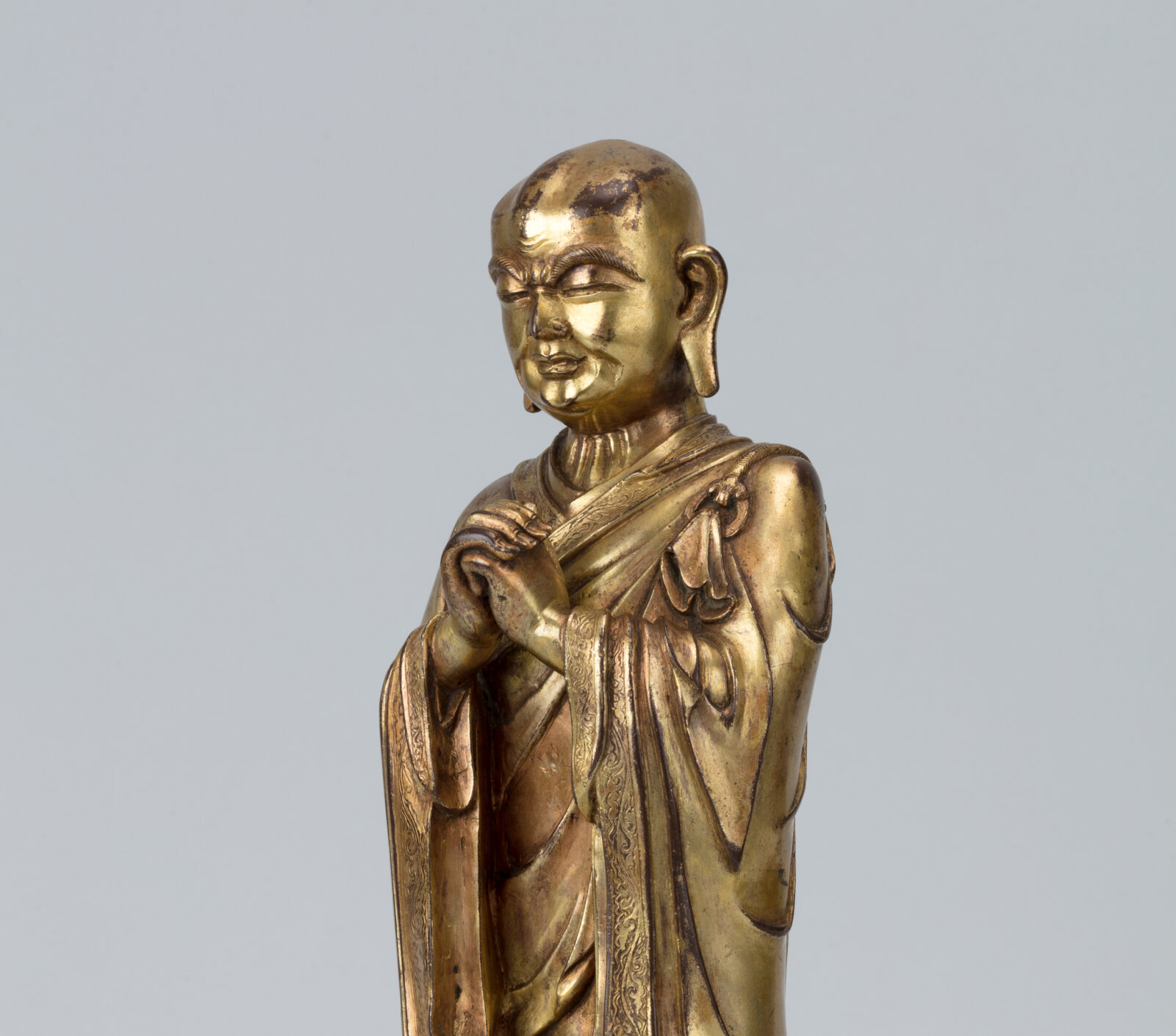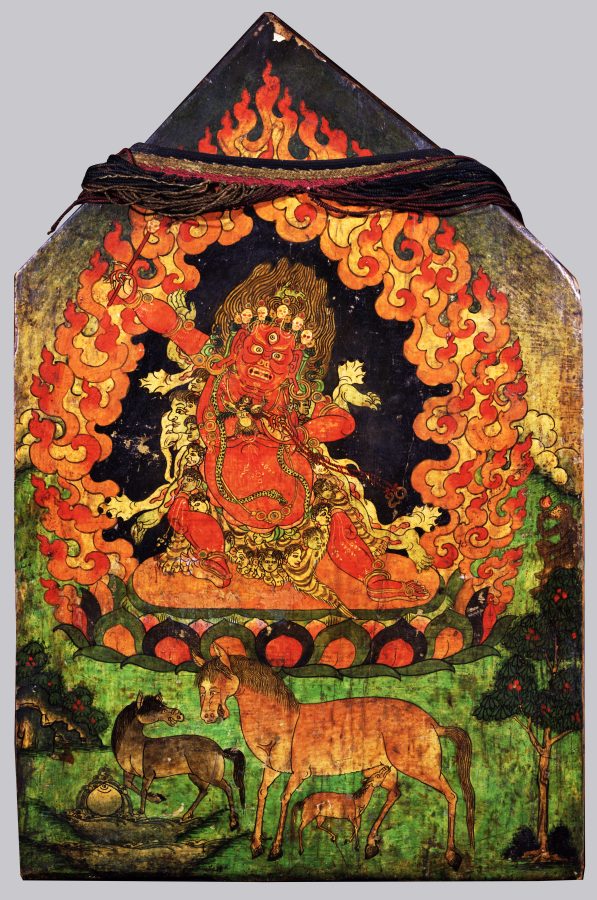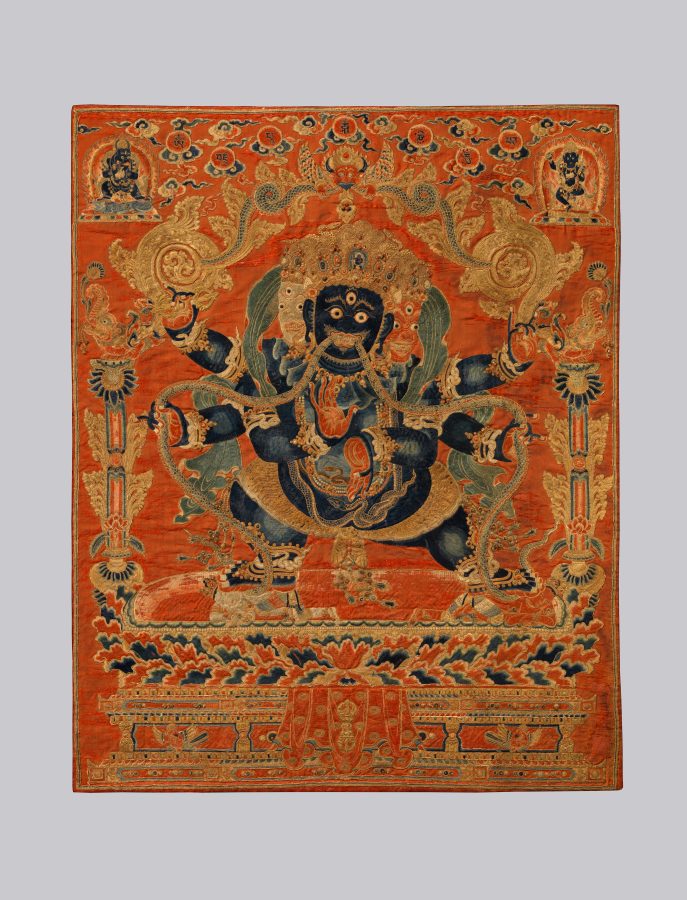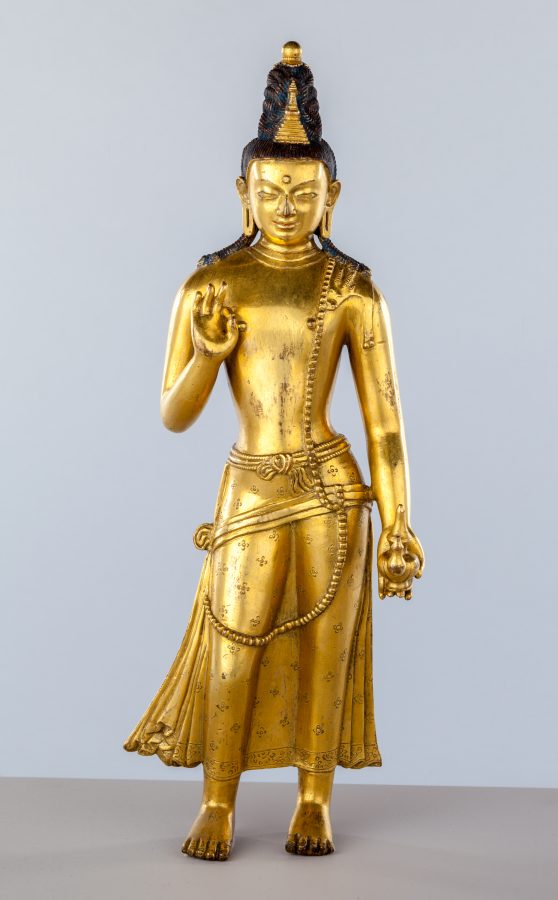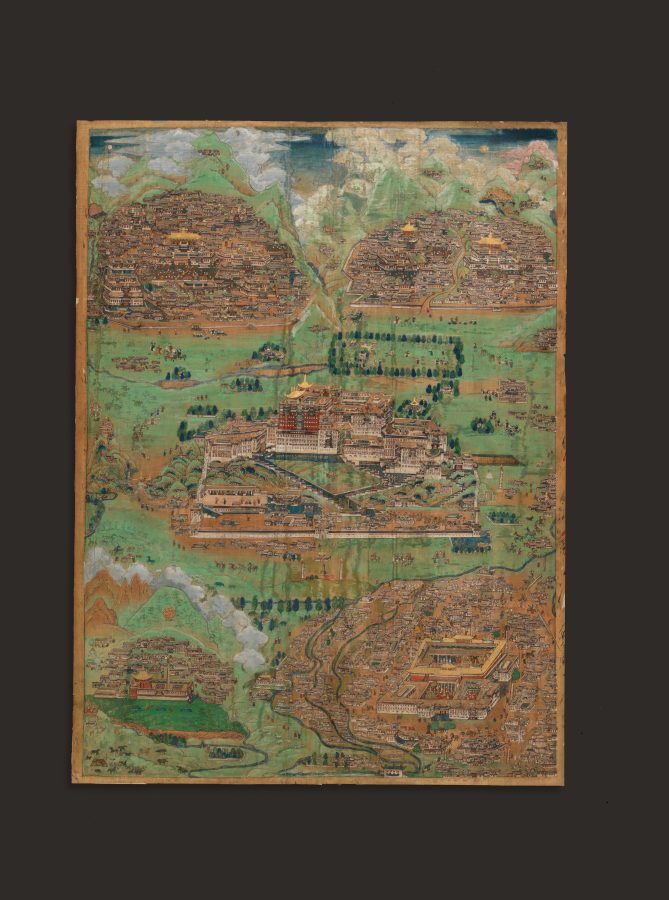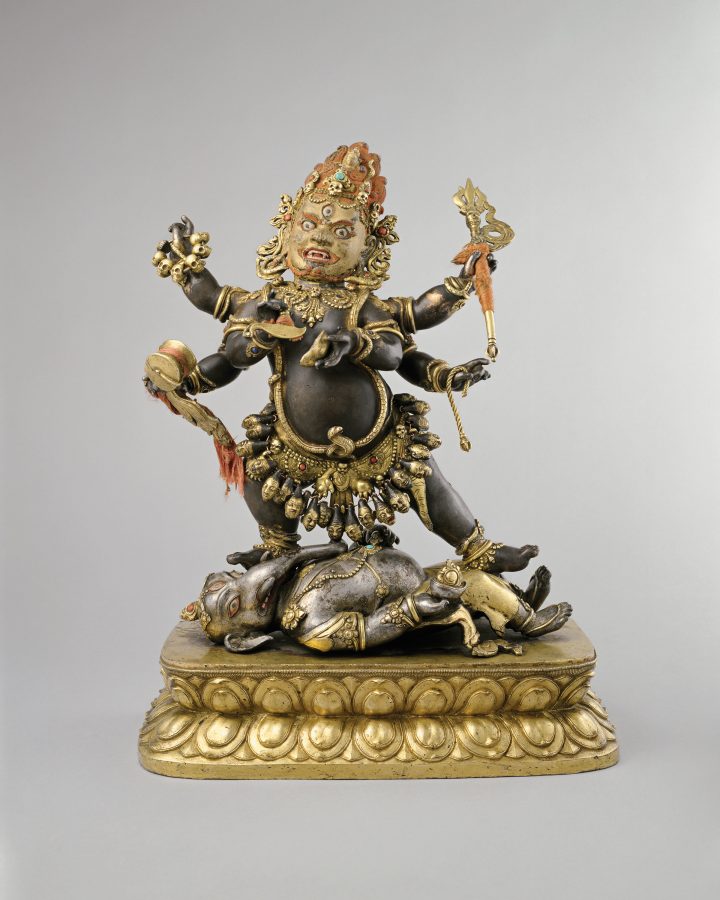Hence Chinese imperial workshops adopted Tibetan Buddhist artistic conventions, and Tibet became a repository of Chinese art. These Chinese objects collected in Tibet gradually inspired Tibetan artists to adopt certain Chinese artistic conventions, such as landscape, into Tibetan painting.
Mongolians were intimately involved in Tibetan affairs during the Mongol Empire (ca. 1206-1368), when they ruled both Tibet and China. Later, with the rise of the Geluk School, Mongolians directly aligned with branches of Tibetan Buddhism and converted to the religion. The Buddhist art of Mongolia was thus similar to that of Tibet but distinctive in certain subjects, materials, and styles.
